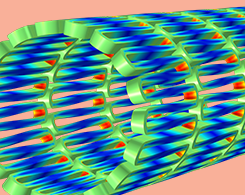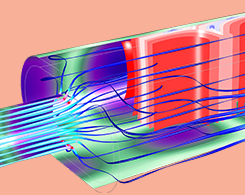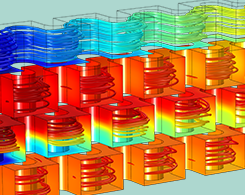Blog Posts Tagged Bioengineering

Analyzing an Arterial Self-Expanding Stent with COMSOL Multiphysics®
Interested in bioengineering? Read this overview of a self-expanding arterial stent modeled in COMSOL Multiphysics® with an implemented shape memory alloy material.

Keynote Video: Simulating the Drying of Cellular Foods
How about them (dried) apples? Empa uses multiscale modeling to analyze the dehydration of soft cellular food products, such as dried fruit, and scale their processes for mass production.

Keynote Video: Designing Improved Heart Pumps with Simulation
Abbott Laboratories designed “the most complex machine ever implanted into a human being” — an LVAD for heart failure patients — using multiphysics modeling. The result? Saved lives.

Studying Presbyopia with an Optomechanical Model of the Human Eye
You have to see this multiphysics simulation research: To help combat the effects of presbyopia in aging eyes, Kejako built a 3D optomechanical model of a full human eye.

Seeing Through Solids: Discovery and Applications of Photoacoustics
The field of photoacoustics started with Alexander Graham Bell and some sunlight. Now, photoacoustic imaging is used for nearly anything involving generating images of opaque material samples.

Optimizing ISFET Designs with Multiphysics Simulation
Ion-sensitive field-effect transistors (ISFETs) measure pH levels for soil analysis, the production of dairy products, and more. Multiphysics simulation can help us optimize these devices.

Analyzing Fine Chemical Production in Plate Reactors
Batch reactors, continuous reactors, plate reactors, oh my. Here, we discuss analyzing the fine chemical production process in a plate reactor using chemical modeling.

Modeling a MOS Capacitor with the Semiconductor Module
MOS capacitors (MOSCAPs) contain 3 main parts: a semiconductor body or substrate, an insulator film, and a metal electrode (or gate). You can use the Semiconductor Module to model MOSCAP designs.
